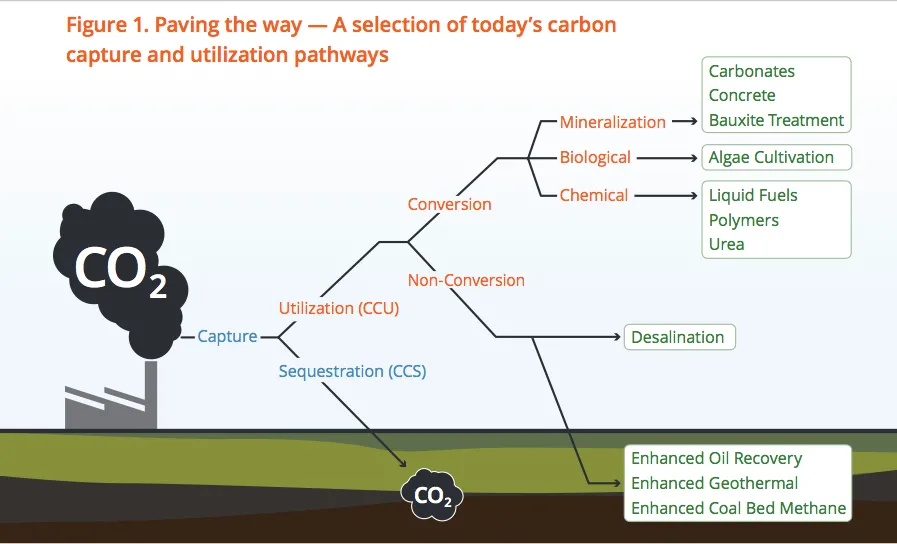The goal of reducing our greenhouse gas emissions gives us an opportunity to search for and develop solutions: both to address our current emissions, and to create new approaches for our economy to produce less or even no carbon dioxide (CO2). To do this, however, we need to create partnerships to ensure we jointly share in the costs and benefits of those solutions.
First steps toward success
The economics of capturing CO2 could be improved if the captured carbon could be utilized. Carbon utilization processes either convert CO2 into a new product or use CO2 in a modified process to generate revenue and in some cases reduce overall carbon emissions. Some utilization technologies, such as enhanced oil recovery, are already commercially viable. Others, including the conversion of CO2 into fuel, cement and chemicals, are at various stages of development. Research and development efforts have been significant, particularly by the United States government, which in 2011 had already invested $1 billion in reuse technologies.
From the perspective of an environmental non-governmental organisation (ENGO) that supports CCS, carbon capture and utilization (CCUS) technologies offer both significant opportunities and challenges:
- Sustainable solutions such as energy efficiency, renewable energy, and carbon capture and utilization technologies must be developed in the right regulatory framework as a portfolio of climate change solutions.
- These technologies provide a critical mitigation option that enables faster and deeper emissions reductions, given the world’s current and projected reliance on fossil fuels.
- Leadership is needed from government and industry to put the structures in place to accelerate the development and deployment of carbon capture technologies.
- The greenhouse gas life cycle of these utilization technologies needs to be assessed to better understand and manage net greenhouse gas benefits.
- Utilization of the captured carbon creates revenue that can support increased development and deployment of carbon capture technologies.
- While enhanced oil recovery is a net positive revenue utilization technology, to ensure net positive greenhouse gas reductions a broad suite of utilization technologies need to be deployed.
 The Pembina Institute recently worked with the Integrated CO2 Network (ICO2N) to develop a fact sheet about CCUS technologies. This was followed by a workshop exploring diverse perspectives on the challenges and opportunities facing these technologies. In the workshop, which was also supported by the Global CCS Institute, participants from environmental non-governmental organisations, industry, academia, think tanks and other groups discussed the current and future role of carbon capture and utilization, and carbon capture and storage.
The Pembina Institute recently worked with the Integrated CO2 Network (ICO2N) to develop a fact sheet about CCUS technologies. This was followed by a workshop exploring diverse perspectives on the challenges and opportunities facing these technologies. In the workshop, which was also supported by the Global CCS Institute, participants from environmental non-governmental organisations, industry, academia, think tanks and other groups discussed the current and future role of carbon capture and utilization, and carbon capture and storage.
Based on ENGO perspectives of the research and workshop discussions, it is clear that if carbon capture and utilization technologies are to be financially feasible and environmentally significant, they must be able to use significant amounts of CO2 in a timely fashion. However, before we can run, we’re going to need to learn how to walk: the first steps towards making these technologies feasible will require significant research and development investment, learning, and new approaches to overcome the significant technological and market challenges that they face.
This blog was originally published on March 13, 2015 by the Global CCS Institute.







